St. John's Online
By Patrick Anderson
St. John’s College will finish the spring 2020 semester online. Many other colleges across the world will do the same in response to the COVID-19 pandemic. Moving the discussion-based classes of St. John’s College online no doubt required adjustment. Current Santa Fe MALA student, Patrick Anderson, describes the experience of moving our seminars online.
The world we once shared has for now disappeared, and we have had to try to replicate it by other means. This is a tall order for any conferencing platform, but we’ve had an encouraging start. Now that we’re a few weeks in, things are beginning to feel normal. The free-form dynamic of a St. John’s class is largely intact, if we forgive the occasional dropped word or staggered audio.
I also can’t help thinking that, as successful as video conferencing classes have been, there is more to the College than what goes on inside the classroom. For me, the biggest adjustment has not been, as one might expect, the modified format of our conversations, but doing the program without a connection to the campus and the many spontaneous conversations that it produces—the kind that don’t require a Zoom link.
I am confident that I speak for all GIs in saying that we were wary of moving classes online for the rest of the semester, and for many good reasons. In the last month, we have all had to get used to having most of our conversations over Zoom, but these circumstances pose a unique challenge to St. John’s students. Sharing physical space with our colleagues is essential to what we do, and we wondered how the program could be preserved in a remote format. However sensitive the technology, however well it captures our image and voice, it’s difficult to replicate the signs and gestures that are invisibly at work animating any conversation.
In all of our classes at St. John’s, the perennial task is to try to get at something deeper, to see something more profound in the text than what we’re currently able to see. This requires a kind of transparency; the space between us needs to disappear in order for us to plumb the text as one mind. The more we are imposed upon by the simple mechanics of conversing, the more successfully insight into the text eludes us. The place where that happens, the seminar room, is essential to our common goal. It takes an uncommon concentration to dissect Kant’s Prolegomena or Shakespeare’s sonnets, and that impervious space, free from outside distractions, is essential to the focus required to approach them.
St. John’s is known for its chairs, but it seems to me that just as important to the mission of the College—perhaps much more so—is that most democratic of institutions, the table. Often serving as a metaphor for the conversation itself, the table is the forum for the conversations we have around it, enforcing an equality among students, and between students and tutors. It gathers us to face each other, erasing the tendency of place to confer priority or privilege; there is no front or back of the room at St. John’s. I am reminded of the moment in The Human Condition where Hannah Arendt says that “[t]o live together in the world means essentially that a world of things is between those who have it in common, as a table is located between those who sit around it”. Without the physical table between us holding the world of our conversations in place, those relations that the table preserves are suddenly called into question.
It seems to me that remote classes are doing exactly what they should do: the experience is sufficiently smooth to keep conversations vivid and productive, but diminished just enough to confirm what we already knew about the value of the seminar room and to have me looking forward to a time when we can meet and talk in person again.

